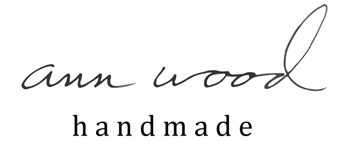
Recently I received a strong spiritual directive from the universe: There should be bunnies and they should be dancing. You can’t fight this sort of thing so I’ve made a sewing pattern. It’s very easy and the result is charming, especially in a group. Plus I’ve included a few tips on getting smooth curves and stuffing along the way.

The thought appeared in my paintings first, I love the idea of a little troupe dancing through the forest. There’s room to play and embellish with details like buttons and ribbons and scraps of lace. You definitely have some tiny scrap of something that is destined for these bunnies.

Before we make the body let’s talk about the details. The features are super simple. You can trace the features on the right side of the fabric before you sew, marking with a pencil or disappearing marker. I used backstitch and 2 strands of embroidery thread. You will find this tip for hiding your knots helpful. The paws just have three little stitches on each.

The slippers are sharpie marker. Why not… You could embroider them if you like too. Add scraps and buttons and patches. A pink colored pencil is great for rosy cheeks or stitch on little pink patches. So many possibilities.

If you’d like to hang your bunnies make a large stitch on the back of the neck with embroidery thread. I hung my bunnies.

making the body

*This post contains an affiliate link – meaning I get a small commission if you purchase through the link.
download the pattern
you will also need:
- light cotton fabric
- basic sewing kit
- chopstick or similar
- stuffing (I like wool)
- embroidery thread
- scraps, buttons, lace etc.
- 1
- 2
1. Cut out the pattern and pin it on your doubled fabric -right sides together – and cut out. If you’d like to trace the face on do that now – on the right side of the fabric.
2. Carefully mark the 1/4 inch seam line on one piece – on the wrong side of on fabric.
- 3
- 4
3. Pin with right sides together and sew the seam by hand or machine. Leave open as indicated on the pattern.
4. Clip the curves as shown, being careful not to clip the seams. Also snip at each end of the opening. – indicated in red.



































































































































